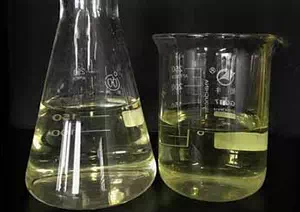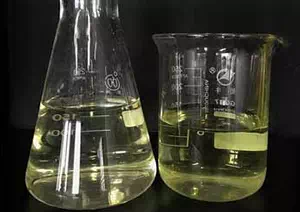All Categories


Acetyl Bromide CAS 506-96-7,Acetyl Bromide, CAS 506-96-7
Acetyl bromide (CAS 506-96-7) is a highly active acyl halide reagent:Irreplaceable acetylation ability: A key intermediate in the synthesis of pharmaceuticals, pesticides and high-end materials, with a reaction efficiency higher than that of acetyl chloride.
CAS : 506-96-7
Formula : C2H3BrO
Mol. wt. : 122.95
EINECS : 208-061-7
| CAS | 506-96-7 |
| Molecular formula | C2H3BrO |
| Molecular weight | 122.95 |
| EIENCS | 208-061-7 |
| Form | Fuming Liquid |
| Melting point | -96 °C |
| boling point | 75-77 °C(lit.) |
| Density | 1.663 g/mL at 25 °C(lit.) |
| Solubility | Miscible with ether, chloroform, benzene and acetone. |
| PKA | / |
| Color | Clear colorless to dark yellow |
| Storage temp |
Acetyl bromide (CAS 506-96-7) is a highly active acyl halide reagent:
Irreplaceable acetylation ability: A key intermediate in the synthesis of pharmaceuticals, pesticides and high-end materials, with a reaction efficiency higher than that of acetyl chloride.
High Risk of operation: Highly corrosive, flammable, explosive upon contact with water 💥 Strict protection (fume hood + anti-corrosion equipment);
Industrial cost performance: Industrial grade (≥98%) with a price as low as ¥15/kg, suitable for bulk purchasing.
Organic synthesis
Acetylation reagent: Efficiently introduces acetyl groups (-COCH₃) and is used in the synthesis of esters, ethers, ketones and amide compounds.
Pharmaceutical intermediates: Preparation of anti-cancer drugs (hydroxyurea), sulfonamide drugs (sulfamethoxazole), and pesticides (methomyl).
Industrial application
Dye manufacturing: Synthesizing dye intermediates such as indigo.
Material modification: Monomers of polymer materials (such as polycarbonate).
Analytical Chemistry
Chromogenic reagents for detecting aldehydes and ketones. Alkalis, alcohols.
Hazardous characteristics:
Strong corrosiveness: Burns may occur upon contact with skin, eyes or respiratory tract (Risk Indication: R34).
Flammability: Flash point 75℃, vapor mixed with air can form explosive mixtures (UN 1716, Hazardous Materials Class 8/PG II).
Highly toxic decomposition products: When heated, it decomposes to release hydrogen bromide and highly toxic carbamoyl bromide (COBr₂).
Toxicity data:
Abdominal LD₅₀ in mice: 250 mg/kg (moderately toxic); Inhalation of LD₅₀ in mammals: 48 g/m³.
Protective measures:
When operating, wear anti-corrosion gloves, goggles and gas masks, and carry out the operation in a fume hood.
Leakage treatment: Adsorb with sand or dry lime. Do not rinse with water (reacts violently with water).
Storage requirements:
Keep sealed, dark, cool and well-ventilated (<30℃), away from oxidants, alkalis and alcohols.
* Prompt reply and 24 hours online, professional team to provide best price and high quality product.
* Sample testing support.
* Every batch of products will be tested to ensureits quality.
*The packing also can be according the customers` requirment.
*Any inquiries will be replied within 24 hours.
*we provide Commerical Invoice, Packing List, Bill of loading, COA , Health certificate and Origin certificate. If your markets have any special requirements, let us know.